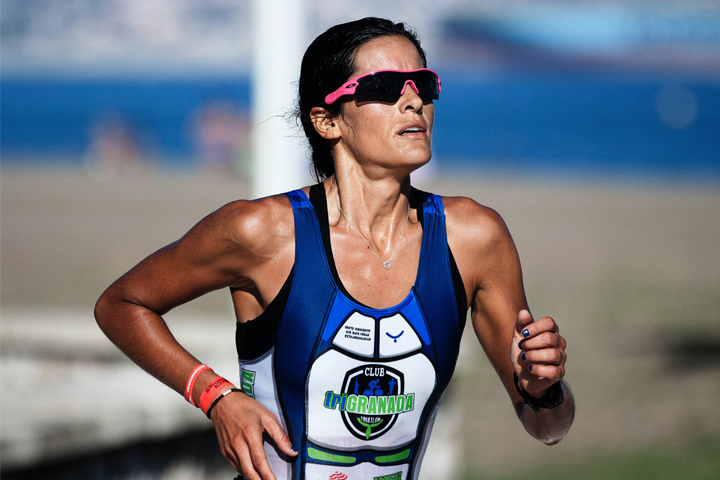
Written by the pioneer in Sports medicine in the British Isles, Professor Moira O’Brien
Participating in sports for most people is a fun and social activity. For those who excel in a sport, join a club and train regularly, it is all the above but with the competitive edge.
For some people though the pressure to win, to be the best they can be and to have to stay a certain body weight, can cause significant physiological and psychological stress, which can lead to overtraining and/or an eating disorder. Both are detrimental to bone health, as well as mental and overall health.
Most people are shocked that I set up the first Osteoporosis clinic in Ireland due to issues with Olympic athletes. At the time I had been the Doctor to the Irish Olympic teams for Moscow, Los Angeles, and Seoul. Athletes started getting stress fractures which were not due to biomechanical problems and I started to investigate to find the cause, which lead me down the bone health route.
Amenorrhea is when a female loses her periods for 3 or more months, not due to pregnancy and has osteopenia or osteoporosis. Amenorrhea is one of the cardinal features of anorexia in females and is associated with low levels of oestrogen. It was originally called “The Female Athlete Triad”.
Athletes, both females and males, at any age can develop an eating disorder, and consume inadequate calories for the amount of exercise they are doing. This is called “The Relative energy deficiency in sport (RED-S)” and it results in low sex hormone levels in both males and females.
The emphasis on low caloric intake, low body weight, despite high energy expenditure, has resulted in an increase in RED-S. Eating disorders such as anorexia and bulimia can on their own or combined affect as many as one third of athletic females. A stress fracture may be the first sign of a bone health issue in an athlete.
Athletes, parents, and coaches, who have unrealistic goals, such as win at all costs, over ambitious coaches, poorly designed training programmes with inadequate recovery periods, with an emphasis on weight, worst of all the ugly parent syndrome, are placing the athlete at a much higher risk of developing an eating disorder.
Osteoporosis in athletes is sports specific; there is a much greater incidence in appearance sports, such as diving, figure skating, gymnastics, synchronised swimming, and ballet. Endurance sports, which involve distance running, particularly in marathon runners. Weight category sports: jockeys, judo and light weight rowers and non-weight bearing activities such as cycling.
Reduce psychological stress if possible. They should be advised to decrease their exercise intensity, and the number of competitions and a 2-3% increase in weight should be encouraged. Recreational athletes are more likely to reduce the intensity of their exercise; elite athletes are unlikely to take this advice. Increase the total calorific content if it is below the required level for the activity performed. Increase the amount of Vitamin D, calcium, protein, and fluids is usually necessary.
If the female athlete will not reduce the amount of training and competitions, she should be advised to go on hormone replacement therapy or the low dose contraceptive pill, while males may require testosterone. Cognitive therapy may also help. Some athletes do not want to go on any medication, as they think it will affect their weight, but they must consider that if they get a stress fracture, they will not be able to train and compete.
A male or female athletes who has developed a stress fracture, it is essential the causes are investigated and addressed. Hormonal levels should be carried out and their bone mineral density should be assessed using a Dual Energy X-ray Absorptiometer (DXA).
If a female athlete has lost their periods for four months and is not pregnant, a DXA scan which is non-invasive and is currently the most precise and widely used method of assessing Bone Mineral Density should be done. It is essential that the results of the DXA are explained to them.
All athletes should keep a training diary, which should include details of their diet, exercise regime and menstrual cycle. Excessive carbohydrate loading may result in some athletes developing diarrhoea, due to intolerance to gluten. This will affect the absorption of Calcium, vitamin D, iron and protein.
All athletes should be given nutritional advice from a dietician who is involved in sport and eating disorders, and if appropriate consult a psychiatrist with a special interest in eating disorders. Ensure they have an adequate caloric intake and increase the calcium and vitamin D intake, if low.
Loss of periods is detrimental to bone health and the earlier a person seeks help, the higher the chance they can continue to participate in the sport they enjoy. I have treated athletes in their late teens who have fractured vertebrae (broken bones in their back) secondary to bone loss, which is why it is so important that athletes, especially elite athletes get help and support ASAP.
There is a wonderful organisation called “Crossing the line”, which was set up specifically to offer support for elite athletes. I would encourage all elite athletes to check this organisation out.
Eating disorders and overtraining should be discussed in all sports clubs so that those affected know they can reach out for help.
All coaching should be positive, person-oriented coaching. Athletes should walk away if they experience negative coaching, as it is not healthy and is totally inappropriate.
Medical Team Approach: Physician, Physiotherapist, Dietician, Physiologist, Psychologist, Psychiatrist, working with the athlete and coach. The successful treatment and prevention of eating disorders and Osteoporosis is to identify those at risk at an early stage and assess their hormone levels and bone mineral density.
Professor Moira O’Brien FRCPI, FFSEM, FFSEM(UK), FTCD, FECSS.